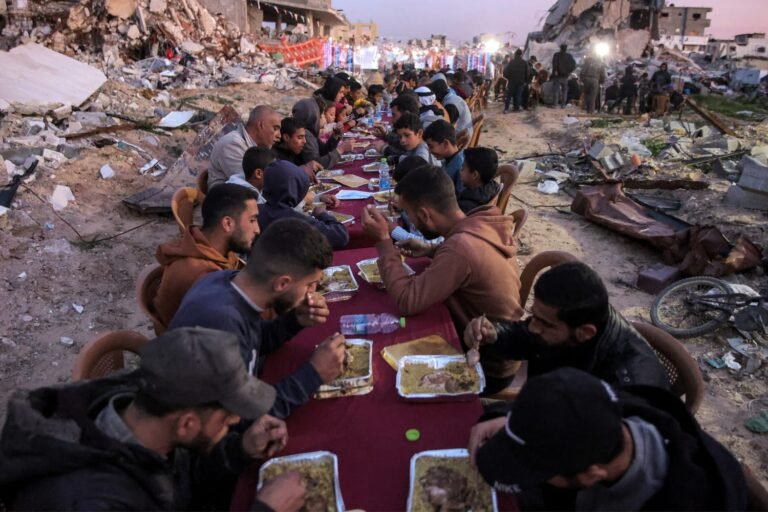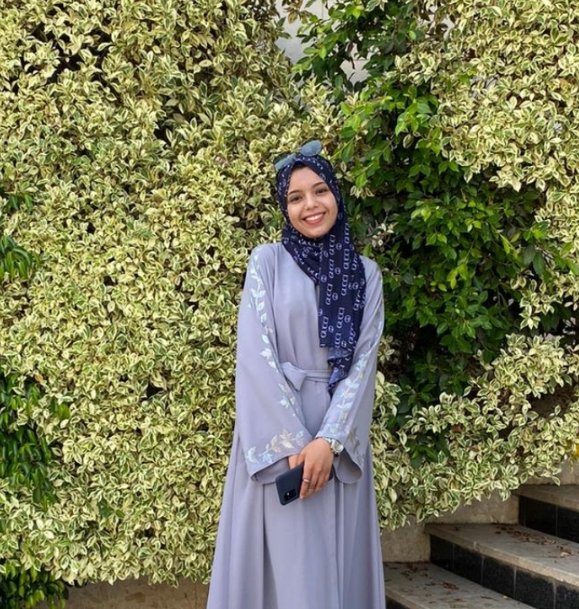Preparations for Ramadan in Gaza would begin weeks in advance.
Families would venture out to shop for all the necessary items, eagerly exploring the bustling Old City and its market, Al-Zawiya. This vibrant hub would be filled with the colors and aromas of Ramadan: sour pickles, the best dates, delicious olives, aromatic spices, thyme, dried fruit for qamar al-din drinks, and an array of juices, with khoroub (carob) being especially popular. New clothes were a staple, with prayer gowns for women, fancy dresses for the girls, and sleek outfits for the boys.
Children would tug insistently at their parents’ hands, longing for lanterns decorated with messages such as “hallou ya hallou, Ramadan Kareem ya hallou.” Dear, dear Ramadan kareem, dear.
The streets would be alive, bustling with people as decorations adorned homes and cheerful Ramadan songs filled the air.
The eve of the first day of Ramadan would bring with it the magical sounds of tarawih prayers echoing through Gaza’s neighborhoods. Children would stay out late, their laughter mingling with the chants and the crackling of fireworks, signalling the holy month’s arrival. Families would gather to share the al-suhur meal and pray al-fajr together. Later, some went back to snooze, while others attended school or work.
By the afternoon, homes would echo with families reading the Holy Quran, kids reciting verses, and parents sharing stories of prophets with their children and grandchildren.
As the moment to prepare the iftar meal approached, the air would fill with the delicious smells wafting from every home. Kitchens would be bustling with activity: one person would be preparing maqlouba (a meat dish with rice and vegetables), another might be making musakhan (a chicken dish), and yet another would be cooking mulukhiya (jute soup). Neighbors would visit each other, bearing plates of food, ensuring no one went home empty-handed.
When the sun set, the iftar table would be spread, and as the call from the mosques resonated to signal the breaking of the fast, joy would envelop everyone who shared in the feast. Laughter and lively conversation would fill the air as families gathered around the table, sharing food and stories.
After iftar, people of all ages would flock to mosques, immersing themselves in tarawih prayers while the sounds of the Holy Quran and prayers reverberated throughout Gaza. The most joyous time of the day followed as mothers prepared qatayf, a beloved dessert made exclusively during the holy month. Once the qatayf disappeared, families would visit each other or settle in front of the TV to enjoy their favorite Ramadan series.
For the people of Gaza, Ramadan was indeed the most special time of year; the whole atmosphere transformed Gaza into what felt like the most beautiful place on Earth.
Yet this year—in the aftermath of the devastating conflict—things feel different. Markets carry dried fruit, dates, and essentials, but they lie amid ruins that were once familiar places. Streets are recognizable only by memory, as many families still remain under the rubble of their homes. Shopping is now the ritual of families who try to maintain their traditions even in the face of loss, but the experience is painful. The cost of goods is high, and many families cannot afford the necessities that once filled their homes with joy.
Children, who previously looked forward to this month with radiant smiles, are now often found with despondent faces. Many have been orphaned, left without mothers or fathers to guide them through the rituals of Ramadan. The fear still haunts them, preventing play or carefree joy, as they remember the terror they witnessed during last year’s Ramadan in the midst of the genocide: the massacres, disease, starvation, and thirst.
They lie awake at night, seized by fears that a bomb or missile could strike again. The nights remain dark and eerie; electricity has been scarce for more than a year, and many families still live in tents. The joy associated with the holy month feels distant, even as people attempt to prepare iftar. Conversations often turn somber, reflecting the absence of lost loved ones who once gathered around the table.
The colorful lights and lanterns that once filled the streets have been replaced with the grim echoes of explosions and the screams of those trapped beneath wreckage. The lively neighborhoods that once bustled with laughter now resemble graveyards, and mosques are no longer filled with worshippers as they once were, much of them reduced to dust.

Even amidst the heartbreak, some attempt to create moments of joy during al-suhur and iftar. Long tables are set up in the streets, where the community can share meals among the surrounding rubble and destruction. Families—including women and children—persist in their prayers of tarawih, although they gather on the ruins of their former mosques or in makeshift spaces.
It felt, for a while, like the people of Gaza finally had a moment to breathe, and to relearn these steps towards appreciating a bountiful Ramadan.
But that was before the ceasefire was shattered.
In the early hours of Tuesday, March 18, while families were still sleeping or beginning to wake for a humble al-suhur, the bombs rained on them again. Without warning, the occupation forces resumed their attacks across the Gaza strip, striking terror during the hours reserved for worship and reflection.
By daylight, hundreds of Palestinians had been killed. None of them in combat, all of them hungry, many of them women and children.
The horror continues until this day.

Hello! I hope you’re having a great day. Good luck 🙂